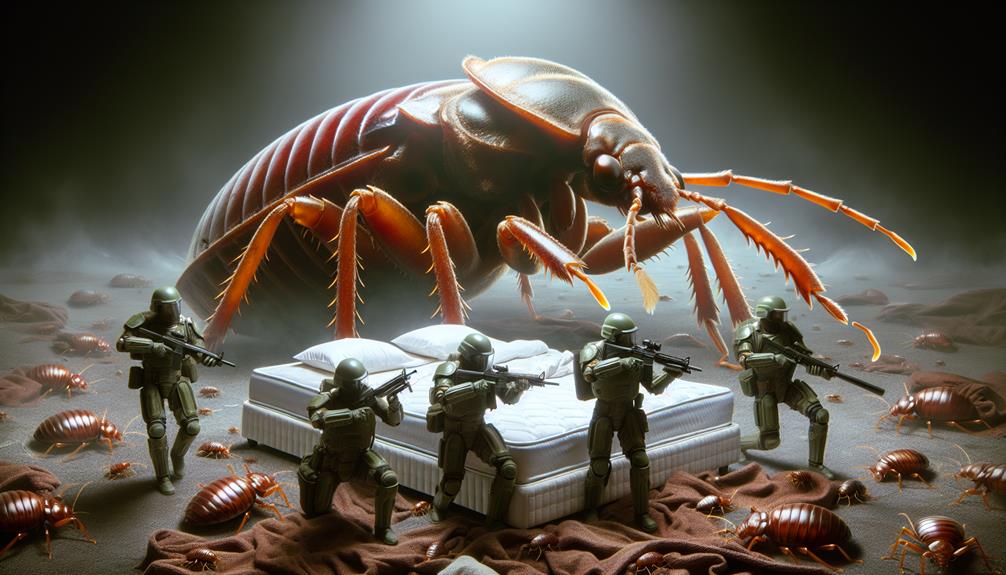The presence of bed bugs in laundry poses a unique challenge that requires careful attention and specific measures to prevent their spread. This article aims to provide essential tips for washing and caring for bed bug-infested laundry. By following these guidelines, you can effectively eliminate them and their eggs from infested items while minimizing the risk of re-infestation. It is important to note that their infestations are not indicative of poor hygiene practices and do not pose a significant risk for disease transmission. They are commonly found in warm climates, although increased travel has led to their presence in colder regions as well. Therefore, it is crucial to employ appropriate strategies for bedbug eradication and prevention.
Key Takeaways
- Preparing the laundry properly before washing is crucial to prevent the spread of them.
- It infestations are not caused by poor hygiene and can occur regardless of cleanliness.
- They are not known to transmit serious communicable diseases, but some individuals may have allergic reactions to their bites.
- Taking preventive measures, such as regularly inspecting and cleaning bedding and furniture, can help prevent re-infestation.
Preparing the Laundry
When preparing bed bug-infested laundry for washing, it is important to avoid leaving clothing on the floor and instead use a bed bug spray repellent in conjunction with washing, or take the laundry to a dry cleaner, being honest about the infestation to prevent spreading it. It spray repellents can be effective in killing any remaining bugs on the fabric.
If the infestation is severe or the clothing is delicate, it may be best to seek professional dry cleaning services. Finding professional dry cleaners who are experienced in handling bedbug-infested laundry is crucial to ensure proper treatment and prevent the spread of the infestation. By following these steps, you can effectively prepare your laundry for washing and minimize the risk of spreading bed bugs.

Bed bug Infestation and Hygiene
Despite common misconceptions, bedbug infestations are unrelated to personal hygiene practices and are instead caused by the transportation of infested items from one location to another. It can easily hitch a ride on luggage, clothing, or used furniture, making its way into homes and spreading rapidly. To prevent bedbug infestations, it is important to be vigilant when traveling and inspect luggage and clothing before bringing them into the home.
Additionally, regularly inspecting and cleaning bedding, furniture, and cracks in walls can help prevent infestations. If They are already present, it is important to seek medical treatment for any allergic reactions to bedbug bites. Treatment options may include over-the-counter creams or antihistamines to alleviate itching and discomfort.
Bed bugs and Disease
It bites may cause allergic reactions in some people, necessitating medical attention. While they are not known to be vectors for serious communicable diseases, their bites can result in various allergic reactions. These reactions can range from mild itching and redness to more severe symptoms such as blisters, hives, or even anaphylaxis in rare cases.
To treat it bites, it is important to avoid scratching the affected area to prevent secondary infections. Applying a cold compress or using over-the-counter anti-itch creams or lotions can help alleviate itching and reduce inflammation. In more severe cases, a doctor may prescribe stronger antihistamines or corticosteroids to manage the symptoms. It is crucial to consult a healthcare professional for proper diagnosis and treatment options. Additionally, taking steps to eliminate it infestation is essential in preventing further allergic reactions.
Regions Prone to Problems
Regions prone to it problems are like hotbeds for these pesky pests, attracting them like magnets to create an infestation. Tourist hotspots, especially those in warm-weather, tropical climates, are particularly susceptible to it infestations. However, due to increased travel, They have also been found in cold-weather climates. To prevent the spread of them in these regions, it is important to implement effective it prevention methods.
These methods include heat-washing all items after travelling, regularly inspecting and cleaning bedding and furniture, and sealing cracks and crevices to prevent entry points for insects. Additionally, using bedbug-proof luggage and clothing encasements when travelling can help protect against infestations.
Getting Rid of Bed Bugs
To effectively eliminate it’s infestations, it is important to follow recommended methods and strategies. Treating their bites is crucial in managing the consequences of an infestation. Individuals who experience allergic reactions to their bites should seek medical attention. Prevention is also key in avoiding their infestations. Regularly inspect and clean bedding, furniture, and cracks in walls to prevent re-infestation. Using mattress and pillow encasements can trap and kill bed bugs, reducing their population.
Additionally, considering bed bug-proof luggage and clothing encasements when travelling can prevent bringing these pests into your home. It is essential to maintain good hygiene practices and heat-wash all items after travelling to minimize the risk of bed bug infestations. Consulting professional pest control services is advisable for severe infestations, as they have the expertise to effectively eliminate bed bugs.
Frequently Asked Questions
Can bed bugs survive the washing machine and dryer?
Bed bugs cannot survive the washing machine and dryer. The high temperatures and agitation during the laundry process effectively kill bed bugs and their eggs. To prevent bedbug infestation in furniture, follow bedbug prevention tips such as regular inspection and cleaning.
Can bed bugs infest other areas of the home besides bedding and clothing?
Bed bugs can infest other areas of the home besides bedding and clothing. Signs of infestation include bloodstains, dark spots, eggs, and shed skins on mattresses, furniture, cracks in walls, baseboards, electrical outlets, and behind wallpaper.
How long can bed bugs survive without a blood meal?
Bed bugs can survive for several months without a blood meal, but their survival depends on temperature. At lower temperatures, bed bugs can enter a dormant state and survive longer periods without feeding, while higher temperatures can accelerate their metabolism and shorten their survival time.
Can bed bugs be killed by freezing temperatures?
Freezing bed bugs can be an effective method for eliminating them. Cold temperatures can kill bed bugs, but it is important to note that the freezing process must be sustained for a prolonged period to ensure complete eradication.
Are there any natural remedies or home remedies to get rid of bed bugs?
Natural remedies for bedbug infestations include using diatomaceous earth, tea tree oil, lavender oil, and neem oil. Home remedies for eliminating bed bugs involve washing infested items in hot water, vacuuming regularly, and using steam to kill bugs and eggs.
You may also enjoy reading this article
Was This Article Helpful?
- Please provide feedback and comments to help us improve our content.
- Share your experiences and any additional tips you have for dealing with pests.
Share this Post


